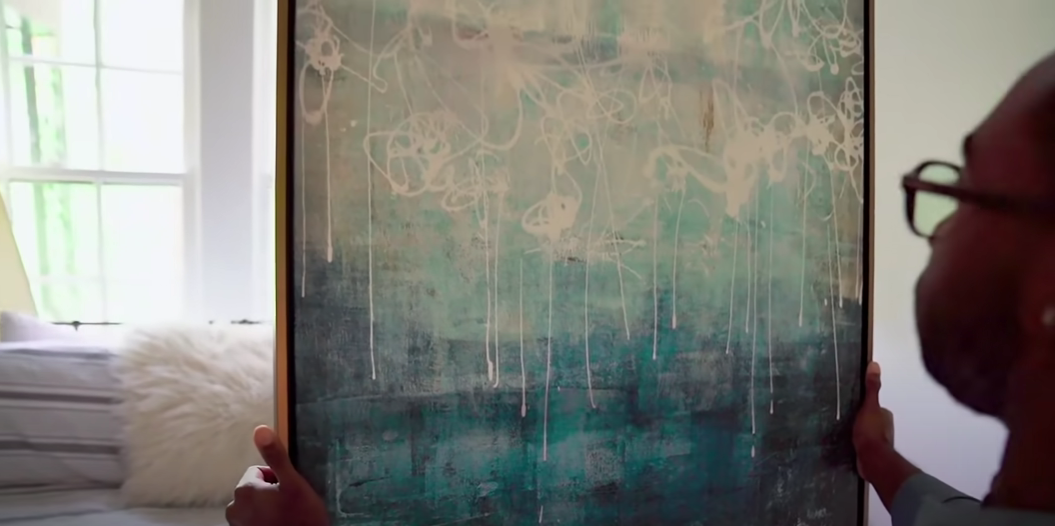From prehistoric times, art has been a powerful vehicle for expression, a means of sharing ideas, feelings, and stories that words cannot quite capture. Apart from making our house look better, art hung on the walls changes a set of rooms into a living, breathing representation of our selves. Everybody who views art gains from it and it greatly affects our surroundings. Besides our mood and general well-being, art on our walls can significantly improve the appearance of a house.
The most obvious way art transforms a house is the main focus here. Imagine walking into a room with just blank walls and no visual appeal. The area seems vacant, uninspired, and unlike. Imagine now the same space with a remarkable wall work of art. The room opens out all at once. Rising front stage, the artwork emphasizes itself and grounds the space's design. It sets the tone for the entire room whether it is a striking, vivid painting injecting vitality and excitement or a calm, serene painting encouraging relaxation.
Still, the influence of art goes beyond mere visual appeal. It influences our emotional state also in great part. Viewing art has been found in studies to reduce blood pressure, ease tension, and even boost mood. Whether or not the work of art speaks to us personally, it sets off an emotional reaction including pleasure, longing, or introspection. This emotional link is quite healing and offers comfort and clarity in a sometimes stormy environment.
Moreover, since art captures our individuality and sense of style, our homes really reflect who we are. The objects we choose to hang on our walls reveal a great deal about us—including our values, interests, and even aspirations. Art allows us to express ourselves in ways words cannot, whether it is in an abstract sculpture appealing to our love of experimentation or a classic landscape reflecting our respect of nature. This kind of self-expression crosses language and connects us to others on a more fundamental, instinctual level.
Apart from reflecting our attitude, art contributes to increase the coherence of the design of a room. Combining many elements of a space allows a well chosen piece to create harmony and balance. While a colorful painting can offer a flash of color stressing the present furniture and décor, a monochromatic piece can evoke peace and simplicity. Art can create a cohesive and deliberate, well-selected look by bridging the gaps between many design styles.
Still, art provides benefits outside these as well. It can also inspire on and test concepts. A provocative piece of art can start a conversation, encourage reflection, and even challenge our expectations. It challenges our presumptions, alters our view of the world, and lets us probe new ideas. In this sense, art not only offers a decorative element but also stimulates our inventiveness and creativity, so motivating us to question tradition and approach life with a more open mind.
Art also helps a house to create continuity and history. Family heirlooms such handcrafted goods or vintage paintings could serve as a link to our past and reminder. Particularly considering its background, the work can inspire legacy and history even if it is not inherited. Whether it's a painting created during a significant life event or a sculpture acquired on an incredible trip, art has the ability to ground us in time and place and give our houses meaning.
More practically, art allows one to see space from another angle. A large, expansive piece can make a small space seem bigger, even if a collection of smaller pieces may offer a better space depth and dimension. The flow of the room, points the observer's attention, and creates movement in the artwork's hanging on the wall. Thus, art is a dynamic force as well as a stationary component that could affect the very building of our houses.
At last, choosing and showcasing artwork can be a quite personal and satisfying trip. This is an opportunity to learn about our tastes, discover new artists, and engage actively in the art scene. Whether our search is through art books, galleries, or internet markets, choosing artwork for our homes is a trip of self-discovery. This is an opportunity for us to examine our values, definition of beauty, and what we would like seen reflected in our houses.
Our homes clearly reflect art at last. It transforms our houses into places of beauty, use, and delight and empty walls into expressive canvases. The benefits of art are several and influence not only the look of our homes but also our feelings, sense of identity, and behavior with the surroundings. This means stop to appreciate the wall art the next time you walk into a room. It could be the key to turning your house into a more energetic place.

